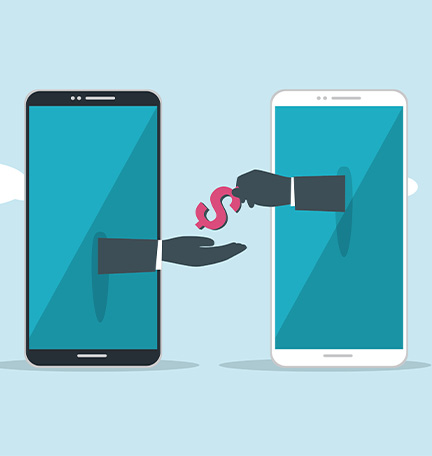How to get out of debt through consolidation
Three strategies to manage what you owe.
Carrying a lot of debt, whether through unpaid high-interest-rate credit card balances or multiple personal loans, can be a difficult situation for your budget. If you are feeling burdened by your debt, you may want to consider consolidating it.
Combining more than one source of debt into a single loan or credit card could help make it easier to manage your finances, provide a clear structure and course of action, and potentially save you money.
But where to start? “The best way to consolidate debt will depend on each individual’s unique financial situation and long-term financial goals,” says Joshua Bulseco, Consumer Market Coach for Regions Bank in Florida. By learning about your debt consolidation options, you’ll be able to weigh the pros and cons of each approach.
Here are three approaches for debt consolidation. Which may be right for your financial situation? To start, weigh the entire cost of each approach versus the potential savings.
Approach 1: Home equity loan
If you have equity in your home, consider applying for a home equity loan as a way to consolidate multiple debts. Its advantages include a lower fixed interest rate and a structured repayment plan. A home equity line of credit, or HELOC, is another possibility, but that isn’t as well suited to debt consolidation.
“One thing to note,” Bulseco says, “is a HELOC typically does not provide the customer with a clear path to eliminate their debt because of its variable interest rate and revolving debt.” The exception would be if it has a loan in a line feature that allows you to convert all or some of your outstanding variable rate balance to a fixed rate with a fixed term, like a home equity loan.
Potential risk: The biggest risk is that if you fail to make payments on a home equity loan, you could risk losing your home. So before you go this route, be confident that the repayments fit into your overall budget.
Approach 2: Personal unsecured loan
If you have no home equity or other collateral, consider combining multiple debts into a personal unsecured loan. Like a home equity loan, it can provide a fixed interest rate and help you streamline and structure your debt payoff.
Possible drawback: You could be ineligible if your credit score doesn’t meet a certain standard.
Approach 3: Credit card consolidation
In addition to the benefit of streamlining your high-interest-rate debt into a single monthly payment, this can often include an introductory period of 0% interest for credit card balances transferred to the new card. That break in interest payments could help you to budget smarter for the long run.
Potential risk: After the introductory period for the 0% interest rate ends, the interest rate could increase dramatically. So, consider whether it’s reasonable for you to pay off the entire balance by the end of the introductory period. Also, weigh any fees charged against the anticipated interest-rate savings.
Be realistic about the size of your debt
The size of your debt could make one or another approach more attractive or appropriate. For example, if your debt load is relatively small—for example, minor credit card debt or modest personal loans—a balance transfer credit card or personal unsecured loan could be a suitable solution.
However, a moderate to large debt load, such as multiple high-interest-rate loans or major credit card debt, could call for the greater balance that a home equity loan could provide.
In general, have a clear plan and a realistic goal for how—and how quickly—you can pay off your debts through debt consolidation.
Staying on track after consolidating debt
Once you have successfully consolidated your loans or credit cards, make sure you stay on track financially. These habits can help:
- Budget realistically. Monitor your expenses and follow a monthly budget. If anything goes awry, address it before it gets out of hand.
- Control your cash flow. Make sure you are able to pay for items in the same month that you buy them. For example, once you have paid off your credit card balance, avoid using your card for purchases if it would lead to creating another balance that you have to carry beyond the current month.
- Use the avalanche method for paying debt. Make the minimum payment on each card except the card with the highest interest rate. Put more money toward the card with the highest interest rate until that card is paid off. Then make minimum payments on all except for the card with the next highest interest rate and so on. (Alternatively, you could pay the smallest balance first and gain momentum for the larger balances, which is the snowball method.)
- Use an accountability partner to stay on track. Just like having a workout buddy to help you stay on track with your exercise regimen can be useful, a debt accountability partner can support you and provide encouragement when you might have a setback or get discouraged.
Regions is here to help
“At Regions, we believe everyone deserves a personalized financial plan and a trusted banking partner to make it a reality,” says Bulseco. “Everyone has a unique financial situation, so if your goal is to pay off debt faster or save on interest charges by consolidating your debt, Regions can provide advice and guidance so that you make the right decisions with your money today and in the future.”
Three things to do
- If you are considering a home equity loan or line of credit, this calculator could help. And to help you calculate debt consolidation loans, try this one.
- Start your financial plan by completing a Greenprint personalized plan at any Regions branch.
- If your debt is the result of a hardship, read more about managing your finances during tough times.






